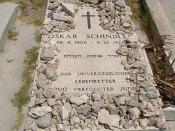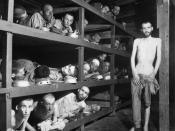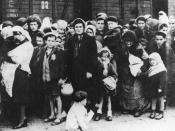1.hol÷o÷caust - Great destruction resulting in the extensive loss of life, especially by fire.
March 20, 1941, the Krakow ghetto is liquidated. 1942, German oppression spills into Transylvania, the Sighet ghetto is liquidated. Two seemingly unrelated events in a plethora of death and oppression. However, both are turning points in two of the most stunningly horrific accounts of the Holocaust; Spielberg's Schindler's List, and Elie Wiesel's Night. There are many similarities between the two accounts some of which will be outlined in this paper.
In Night evil is personified in many ways. One of the Jews in a concentration camp says, "I've got more faith in Hitler than in anyone else. He's the only one who's kept his promises, all his promises, to the Jewish people." This statement seems to be made from an existentialist point of view, almost saying that the only thing in life for certain is death.
This seems to be comparing Hitler to an evil but God-like figure that has power over the Jew's death. Hitler, at this point in the novel, is evil personified to the Jews. The SS, or more specifically all the Swastika bearing personnel, also seem to be an everyday evil for the Jews. They are constantly afraid of the SS and it is the SS that separate them from their families with, "Eight words spoken quietly, indifferently, without emotion. Eight short, simple words...Men to the left! Women to the right!" The exact scene occurred many times during the course of the Holocaust, one such occurrence was in the Plaszow concentration camp, shown during the movie Schindler's List.
Schindler's List is Spielberg's award winning masterpiece- a three-hour long epic of the nightmarish holocaust. Schindler's List is completely in black and white (except for the bookend scenes, and the girl...


